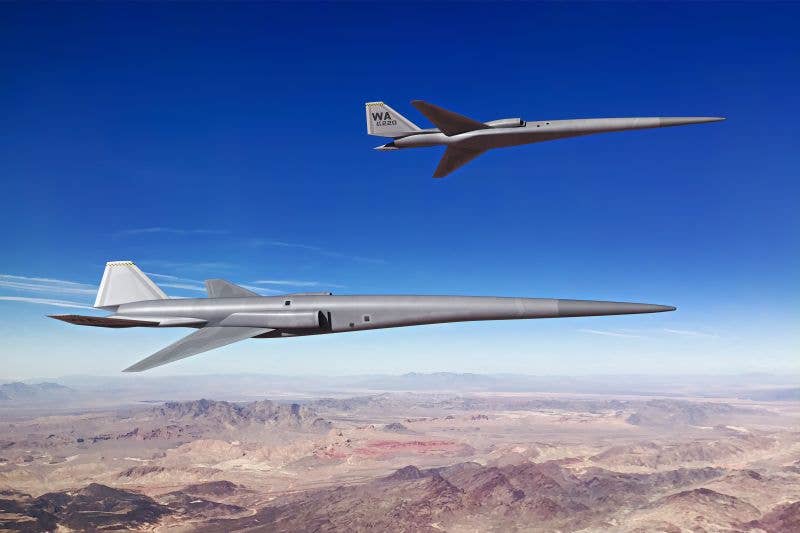
The U.S. Air Force has awarded a $750,000 research contract to Exosonic for a supersonic uncrewed aerial vehicle (UAV) demonstrator, the aerospace company announced Wednesday.
The technology will be the first purpose-built supersonic UAV developed to aid the Air Force in training pilots, at a time when the service faces challenges stemming from pilot shortages, Exosonic said.
The 15-month Direct to Phase II Small Business Innovation Research (SBIR) contract was awarded by the Air Force Life Cycle Management Center’s AFWERX innovation arm, and is in partnership with Air Combat Command and the Air Force Research Laboratory, and the Presidential and Executive Airlift Directorate.
What It Could Do
One use for the supersonic UAV, says Exosonic, is as a mock adversary capable of stressing fighter pilots during live training missions, which could be conducted at a fraction of the cost of traditional live air training. The UAV also has potential utility as a target drone or in intelligence, surveillance and reconnaissance applications, the aerospace company said.
“This supersonic UAV will help the pilot training mission by acting as a near-peer adversary fighter to challenge fighter pilots in live flight training,” Exosonic said in a statement. “Due to constrained training budgets and a pilot shortage, the USAF cannot efficiently produce new, fully-trained fighter pilots.
Exosonic is proud to announce a Direct to Phase II SBIR contract from the @usairforce. Awarded by the @AFLCMCofficial’s @AFWERX, it is in partnership w/ @USAF_ACC, @AFResearchLab, & the Presidential and Executive Airlift Directorate. Full press release: https://t.co/sYbCe6ix8Q
— Exosonic (@FlyExosonic) October 12, 2021
“As a result, a limited number of fighter pilots are receiving the adequate amount of live air training necessary to be prepared to defend our country against near-peer adversaries.”
The supersonic UAV demonstrator is expected to be delivered in 2024, the company said.
The project will also play a role in advancing development of Exosonic’s supersonic airliner. The company said it’s reinvesting profits from UAV sales into supersonic product development, including a 70-passenger airliner designed to fly overland with a low boom in the 5,000-nm range.
“The supersonic UAV work is critical to our company’s strategy due to how much we’ll learn about designing, manufacturing, and maintaining supersonic airplanes with our first UAV products,” Norris Tie, Exosonic CEO, said. “The UAV is also important to our company’s longevity. It will provide profits that we can funnel back into our company and give investors, suppliers, and customers confidence that we can deliver supersonic aircraft to the market before anyone needs to make a multi-billion dollar investment.”
The UAV will also help validate low boom shaping techniques, Stephanie Werner, Exosonic’s principal aircraft interior designer and business development analyst, told FLYING.
“Validating our low boom shaping techniques are invaluable as we’d apply these same techniques to Exosonic’s airliner to ensure our airliner has a quiet sonic boom acceptable for overland supersonic flight,” Werner said. “In addition, we’ll learn a lot about developing a supersonic aircraft, albeit much less complex than an airliner, with our UAV.”

Sign-up for newsletters & special offers!
Get the latest FLYING stories & special offers delivered directly to your inbox






